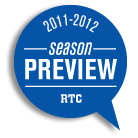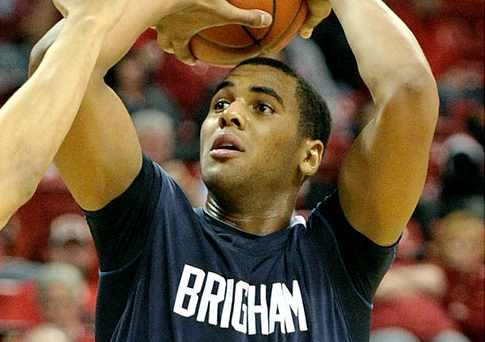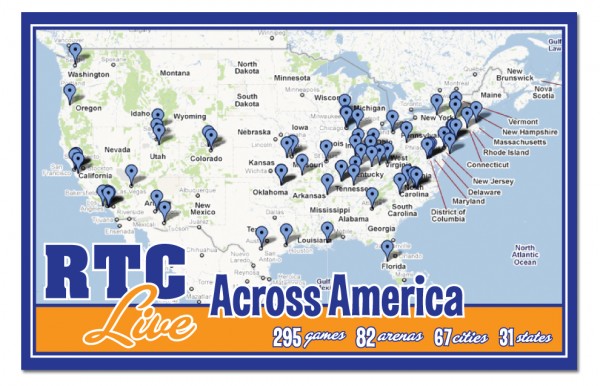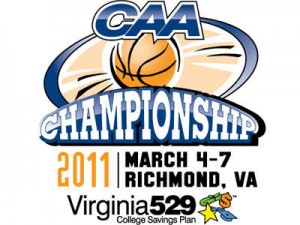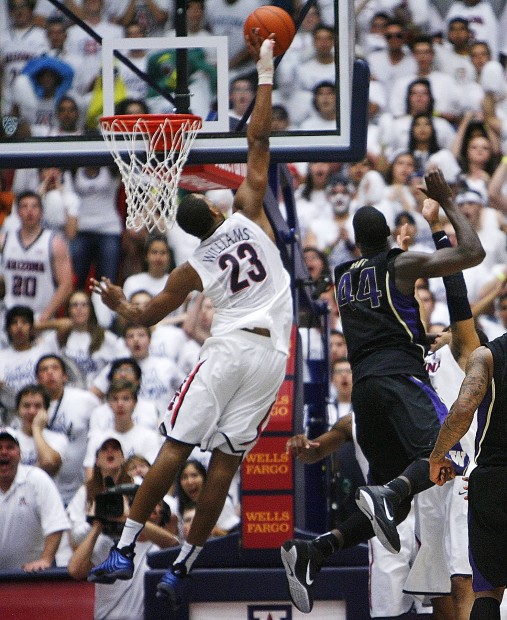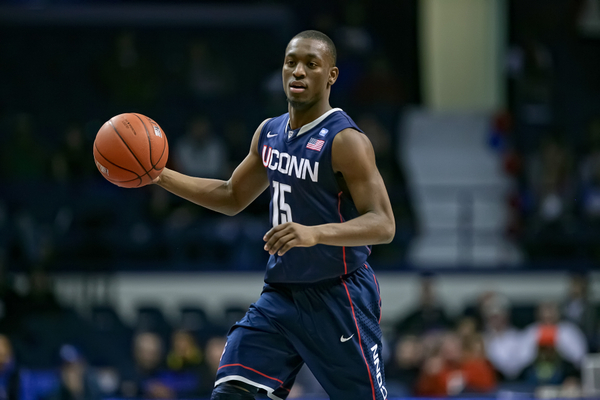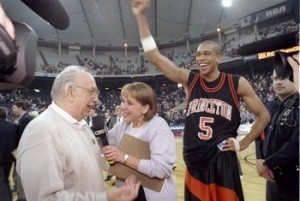
Michael Vernetti is the RTC correspondent for the West Coast Conference.
Power Rankings and Postseason Outlook
1) Saint Mary’s (24-8, 11-3). The record puts them slightly ahead of Gonzaga, but the Gaels would gladly trade places with the Zags as the NCAA Tournament looms. Without an automatic bid, the Gaels and their mediocre out-of-conference record are at the mercy of the NCAA Selection Committee. Hope for the Big Dance, but consider the NIT a strong possibility.
2) Gonzaga (24-9, 11-3), WCC Tournament Champions, recipient of automatic NCAA bid. How well a rugged out-of-conference schedule will hold up to the Selection Committee’s scrutiny will determine where the Zags are seeded. They are definitely on an upsurge at regular season’s end, something the committee considers favorably.
3) San Francisco (17-13, 10-4), not an NCAA Tournament contender but an intriguing late-season story, the Dons gave Gonzaga a tougher game in the WCC Tournament semis (lost 71-67) than Saint Mary’s did in the championship game. The NIT is definitely a possibility for Rex Walters’ team.
4) Santa Clara (19-13, 8-6) seems to fit the profile for a bid to the College Basketball Invitational or the CollegeInsider.com Postseason Tournament.
5) Portland (20-11, 7-7) posted another 20-win season and played in the CollegeInsider.com tourney last year, but would seem to rank behind Santa Clara for a bid this year.
6) Pepperdine (12-21, 5-9) finished with a small push to stay out of the bottom of the conference, but will have to settle for that. Team anomaly: the Waves played better with the dismissal of star guard Keion Bell than they did with him in the lineup.
7) San Diego (6-24, 2-12). The Toreros ruined Randy Bennett’s season with their improbable upset of the Gaels on February 16, but did little else to give Bill Grier a reason for an upbeat off-season.
8) The hands-down Disappointment of the Year in the WCC, Loyola Marymount ended in last place after being picked second ahead of Saint Mary’s in a pre-season coaches’ poll. Does embattled Max Good have a future with the Lions after his team’s utter collapse? Only time will tell.
A Look Back
When the nets were cut by the victorious Gonzaga Bulldogs Monday night at the Orleans Arena in Las Vegas, there was a sense of déjà vu for the West Coast Conference. The same foes, Gonzaga and Saint Mary’s, battled it out for the WCC tournament championship and the automatic NCAA bid that went with it. Gonzaga won this year’s title, 75-63, avenging an 81-62 pasting administered by the Gaels in 2010, and could claim WCC supremacy for the 11th straight year even though the Zags and Saint Mary’s tied for the regular-season championship with 11-3 records. Gonzaga now stands at 24-9, and Saint Mary’s at 24-8 with a rare Friday contest in between against Weber State – added as a warm-up for possible post-season play – still to come in Moraga.
For all the apparent similarities, however, the story of the Gaels and Bulldogs was marked by differences. The turning point in both teams’ season came in a January 27 game between the two on the Zags’ court in Spokane. Saint Mary’s gutted out a 73-71 win on the strength of Mickey McConnell’s last-second one-handed leaner from the free throw stripe with the Zag’s seven-footer Robert Sacre draped all over him.
The game should have been a difference-maker for Saint Mary’s, marking the first victory in Spokane during the immensely successful 10-year reign of 2011 WCC Coach of the Year Randy Bennett. Instead of using the victory to spark a late-season run to the outright WCC championship and a secure NCAA seeding, however, the Gaels stumbled badly from that point on. They were routed 85-70 by a pesky Portland Pilots team two nights later in Portland, followed that up with an inexplicable 74-66 loss to cellar-dwelling San Diego on February 16, lost an ESPN Bracketbuster contest against Utah State 75-65 in Moraga on the 19th, and then dropped the rematch against Gonzaga, 89-85 in overtime on the 24th to give the Zags a shot at a conference season tie. Only a regular season-ending victory over Portland in Moraga on February 26 enabled the Gaels to avoid total collapse heading into the WCC Tournament.
Gonzaga, on the other hand, used the Saint Mary’s loss to spur itself to a 9-0 WCC run marred only by a 62-58 non-conference setback against Memphis on February 5. Gonzaga’s spurt was fueled in part by the ascension of JC transfer Marquise Carter to the starting point guard spot that had eluded him previously. On the strength of his late-season play, Carter garnered Newcomer of the Year honors in the WCC and was named Most Valuable Player in the WCC Tournament, indicating the realization by other conference coaches of his impact on what had been a wavering Gonzaga offense.
As Selection Sunday looms, Gonzaga considers NCAA life with possibly a lower seeding than they are accustomed to – perhaps a 9 or 10 seed instead of a 5 or 6 – but they know they’re in. Saint Mary’s, on the other hand, will be Nervous Nellies on judgment day, hearkening back to two years ago when they were stiffed by the NCAA Selection Committee and won two games in the NIT instead. Most bracketologists had the Gaels in the NCAA field despite the WCC tournament result, but Bennett has been burned before and will probably not relax until he knows the Gaels’ fate for sure. The game against Weber State was not intended, nor will serve, to sway the Selection Committee.
All-Conference Honors:
McConnell, the Gaels’ crafty senior point guard, was voted Player of the Year and his stats – 16.8 points and 6.0 assists per game – reflected that. McConnell was joined on the All-Conference Team by his sophomore backcourt mate Matthew Dellavedova, who contributed 13.5 points and 5.3 assists-per-game, and junior transfer forward Rob Jones, who totaled 13.4 points per game and 7.5 rebounds per game. Others were:
- Kevin Foster, Santa Clara, the WCC’s leading scorer at 19.4 ppg
- Steven Gray, Gonzaga 13.8 ppg and 3.9 apg
- Rashad Green, San Francisco guard, 11.8 ppg, 2.8 apg
- Nemanja Mitrovic, Portland guard, 13.7 ppg
- Mikey Williams, San Francisco guard, 15.0 ppg
- Robert Sacre, Gonzaga center, 12.5 ppg and 6.2 rpg
- Luke Sikma, Portland forward, 13.1 ppg and a league-leading 10.5 rpg





























